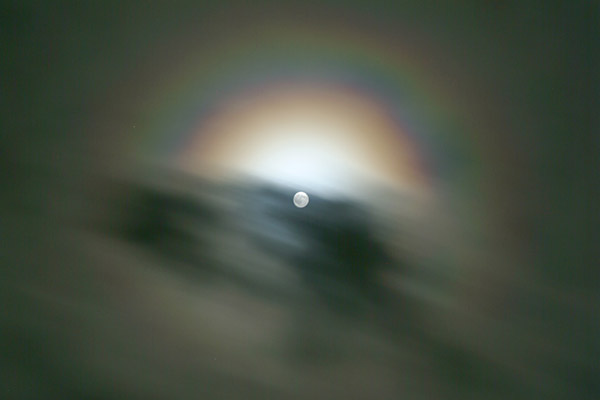
OPOD
What's New
Rays & Shadows
Water Droplets
Clouds & Fog
Droplets & Light
Corona
Ringed Moon
Formation
Colours
Droplet sizes
Bishop's ring
Pollen Corona
More images
Iridescent Clouds
Fogbow
The Glory
Heiligenschein
IRIS software
Rainbows
Ice Halos
High Atmosphere
Links & Resources
Search - Index
123456789012345678

| Ringed Moon - Lunar Corona |
 |
Rings
around the Moon.
When thin clouds scud across a bright moon it is often surrounded by a bright disk and faint coloured rings, a lunar corona. Eva Seidenfaden's (Atmospheric optics) evocative image unusually shows the moon's disc, it usually has to be overexposed to capture the much fainter corona. ©2004 Eva Seidenfaden, shown with permission. |
Lunar coronae are much more familiar than those around the sun. They are seen when the clouds are thin enough that each single corona light ray reaching the eye is scattered or diffracted by only one droplet. Of course, the whole corona is made by a great many droplets individually scattering the moonlight. Sometimes as clouds pass over the moon the corona shrinks and swells as different sized droplets mould it. Small droplets make the largest coronae with aureoles a few moon diameters across. A 22° halo can also surround the moon but that is much larger. Any small particle can make a corona. Ice crystals in high clouds form them. Even wind drifting pollen grains make them. |
|
Lunar coronae are much more familiar
than those around the sun. |